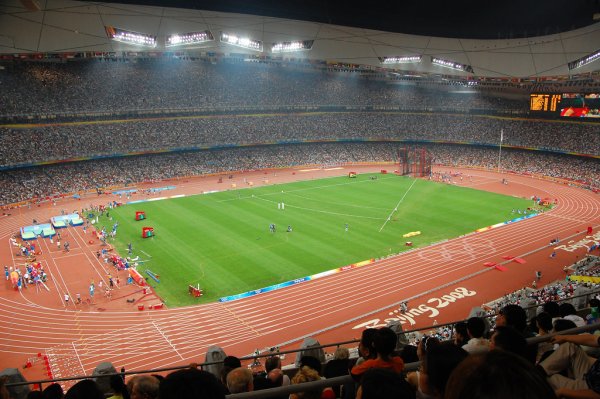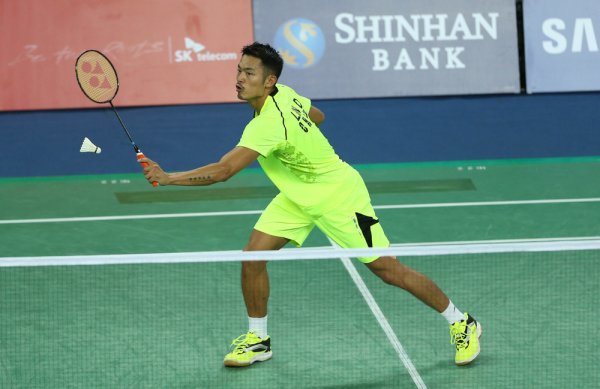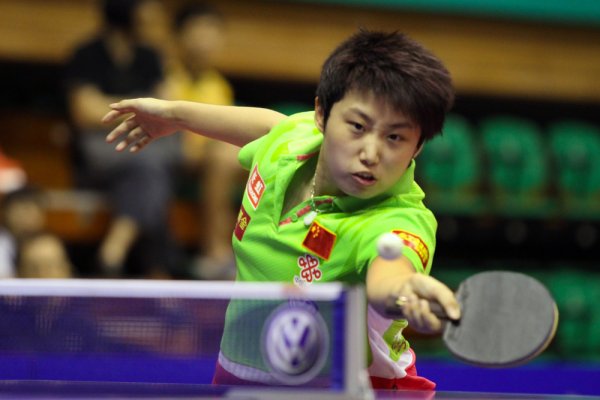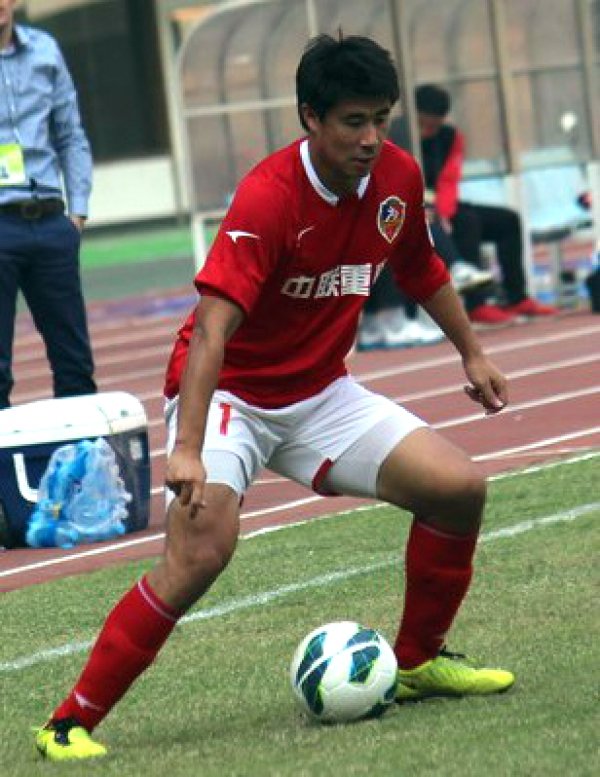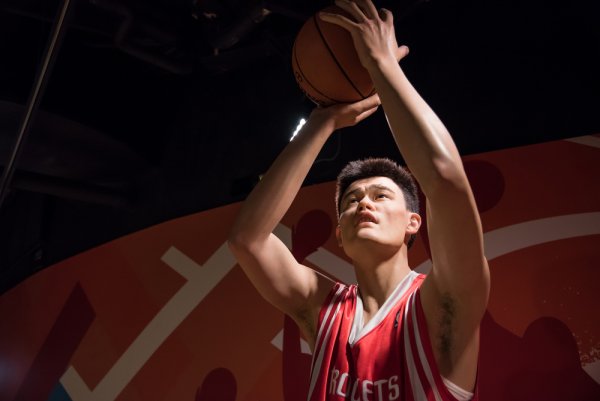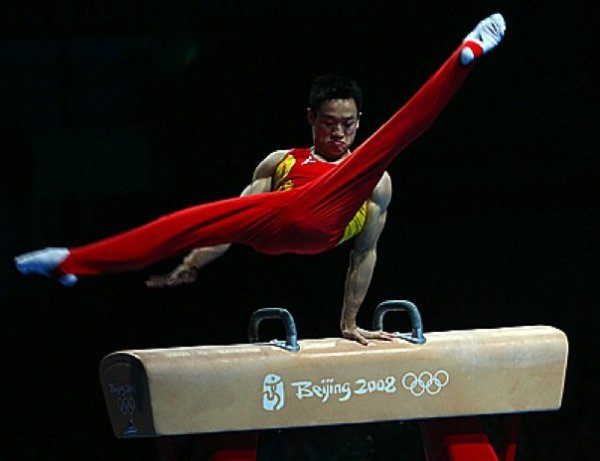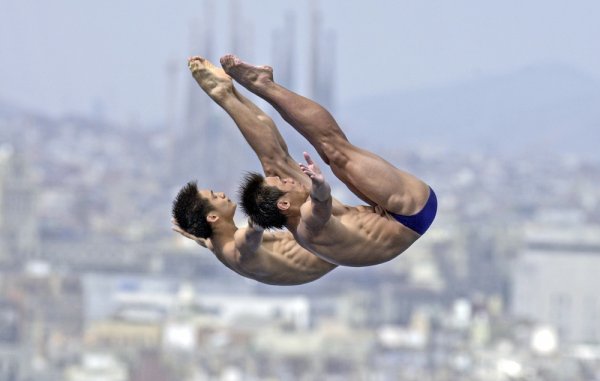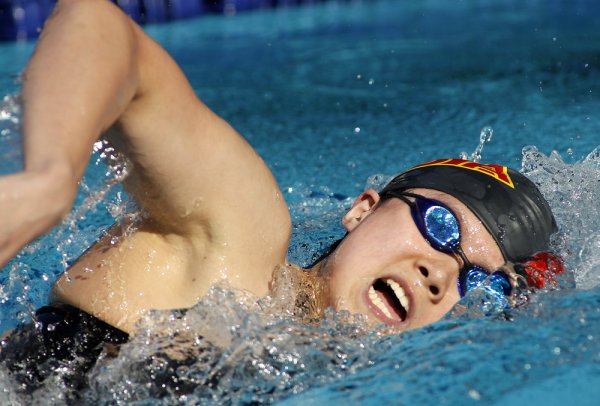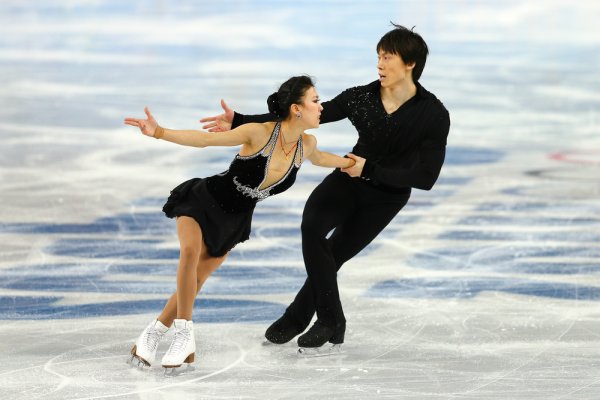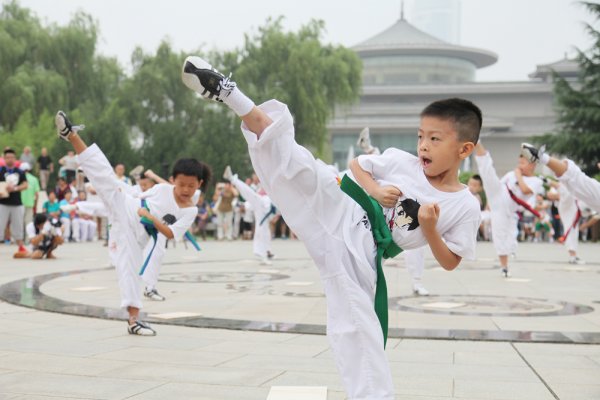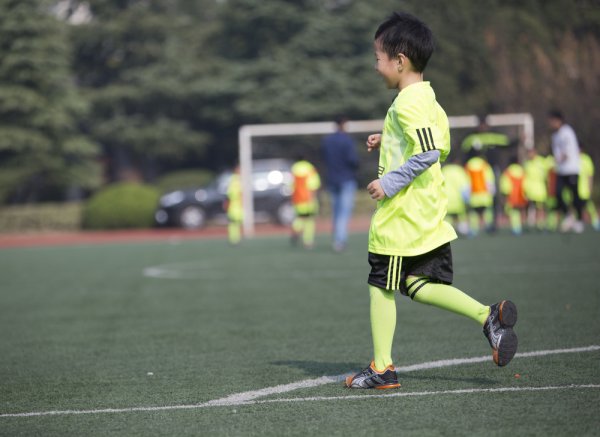Culture and Society: Sports
General
The history of China is replete with the feats of warriors in wrestling, hunting, archery, horseback riding, and boat racing. Unearthed relics of the Neolithic period show that hunting, archery, swimming, fishing, and similar sports were well developed in China. Boat racing, in particular, has a history of 2,500 years and the national Dragonboat race is the highlight at the annual Duan Wu festival. Another ancient traditional sport played in the region is cuju, a game now officially recognized to be the precursor of modern day soccer. Martial arts were highly popular in China and the country has the distinction of founding many schools (forms) of ancient and modern martial arts. Modern China keeps its old traditions alive with martial arts still very popular among the population to this day.
The most popular modern sport in China is soccer, introduced into the country during the latter half of the 20th century and quickly gained in popularity. The sport is popular throughout the country, particularly in the urban centers. Other popular sports are martial arts, table tennis, badminton, basketball, gymnastics, track and field, motor sports, golf, cycling, weightlifting, and swimming. Baseball is also growing in popularity, especially among the youth. The traditional Mongolian-style wrestling is world famous. Similarly, skills in archery, yak racing, and horseback riding are kept alive in the Tibet region.
China is a great contender for medals in all international games including the Asian games. It has won more medals in the Asian games than any other nation in the continent.China fields competitors in board games like chess, Go Weiqi, and Xiangqi (Chinese chess). It also excels in badminton and gymnastics and has the most table tennis wins in Olympic history.
China’s various ethnic groups have their own sports and traditions. Archery, horseback riding, and wrestling are popular among Mongols. The Zhuang community has a unique ball game played with silk balls. They also have other popular activities such as swings and see-saw. The Tibetans conduct Yak races. The Miao people are famous for water sports and conduct the famous Dragon boat race. Flying huge kites, skating, walking on stilts, top spinning, chasing girls (actually, it is a catch-me-if-you-can game), sepak, and takraw are few examples of unique Chinese traditional sports..
Individual Sport Participation
Sports have become a part of daily life in Chinese culture.. Traditional East Asian exercise regimens like Tai Ji Chuan and Qigong, Dao In (breathing accompanied by a massage), and Wuqinxi are popular with large sections of the population, particularly the middle-aged and elderly. Academies that tutored ancient Chinese warriors are still at work and continue to impart traditional martial arts skills including sports like baixi (acrobatics), cuju (soccer), jiju (polo), and bingxi (games on ice).
Sports are popular even at the workplace and it is common to find employees playing table tennis or badminton during their breaks. The government of China has directed its bodies to provide employees with a ten-minute break in the morning and afternoon for sports and physical fitness activity. The state has played its part in promoting sports by constructing over 500 world-class sports facilities across China and about a million people use the facilities regularly to keep fit and play sports of their choice. Most of these facilities, however, cater to professional sportspersons and those selected for rigorous full-time training. These centers provide excellent facilities and athletes have almost every conceivable requirement at their disposal, including on-call masseurs. The vast majority of the ordinary population, both urban and rural, plays sports on open grounds and streets.
Soccer is the most popular sport in China among the men. Baseball, imported from the United States, is rapidly growing in popularity although it is yet to attain the status of a major spectator sport. Table tennis and basketball are also top recreational sports in China. Table tennis is played at both amateur and professional levels. There are over 300 million players of table tennis and over 300 million basketball players in the country. The most popular traditional sports among men are different forms of martial arts and various ethnic and region-specific sports. Popular modern sports include table tennis, badminton, golf, sailing, and swimming. Chinese women participate in almost all sports including volleyball, gymnastics, and track and field. Women are also generally very involved in culturally tailored sporting activities in rural areas. Chinese youth and children also participate in all sport events, which are generally compulsory for them.
Private Sports Clubs
China has numerous private sports clubs, including those that offer elite sports like golf, yachting, motor racing, and skiing. In addition, there are also clubs that cater to those interested in traditional sports. There are over 3,500 clubs and groups spread throughout the country that provide facilities like courts for tennis, basketball, volleyball, and squash, soccer pitches, gymnasiums, swimming pools, and golf courses. Sports facilities and gymnasiums are available for most of the country’s people. All major hotels provide gyms, spas, and fitness centers.
Private Sports Clubs Listings:
Scitech Club
22 Jianguomenwai Avenue
Chaoyang District
Beijing
China
This club has many facilities including an indoor swimming pool, tennis court, bowling alley, fitness center, sauna, recreation hall, body testing and recovery room, billiards, chess and card rooms, and salons. It also offers quality food and beverages. This exclusive club has many types of membership options. The gold member, for a lifetime transferable membership, costs ¥100,000 (US$13,900) while a silver card membership costs ¥70,000 (US$9,700) and is valid for 10 years. Apart from entrance fee, which ranges from ¥1,000 (US$140) to ¥2,000 (US$280), corporate firms and individuals pay ¥7,000 (US$970) while families are charged ¥17,000 (US$2,360). Single item cards with fees ranging from ¥800 (US$110) to ¥6,000 (US$830) are also available.
Dongdan Sports Center
108 Chongwenmennei Avenue
Dongcheng
Beijing
China
Founded in 1995, this center offers facilities for basketball, billiards, soccer, martial arts, table tennis, swimming, tennis, and volleyball. The annual membership fee is ¥2,700 (US$ 337) and an additional ¥15 (US$2) per hour for training, if availed.
Beijing Golf Club
East bank of Chaobai River
Shunyi District
Beijing
China
Founded in 1987, this 7,101-yard, 18-hole golf course is situated near the Great Wall and touches the Ming Tomb Reservoir. Golf lovers who join the club pay ¥300,000 (US$41,720) for membership while a corporate membership for two costs ¥600,000 (US$83,425).
Capital Club Athletic Center
50/F, Capital Mansion
6 Xin Yuan Nan Road
Chaoyang District
Beijing
China
The Capital Club Athletic Center offers facilities for table tennis, squash, billiards, bowling, fitness, swimming, taekwondo, and tennis. This is an athletic center that provides complete sport facilities for its members and their family members.
Huatang International Golf Club
Yanjiao Development Zone
Beijing
China
This club has an 18-hole golf course with a driving range, golf academy, a pro-shop, and a clubhouse. It was designed by Mr. Graham Marsh, an Australian architect and inaugurated in 1997. The facilities are open to public and can be reached within 40 minutes from the city center. It has unique fairways and multiple bunks ready to grasp slightly errant shots, which attracts golfers around the world.
Shanghai International Golf & Country Club
Zhu Jia Jiao
Qing Pu County
Shanghai
China
Situated in the Dianshan Lake area about 40 kilometers (25 miles) from the city, this golf course was designed by Robert Trent Jones Jr. It is an 18-hole, par-72 course with a length of 7,025 yards that features water hazards and competitive fairways. It has a pro-shop and offers billiards, three tennis courts, indoor swimming pool, a mahjong room, and restaurants.
School Sports
Physical education is compulsory in China’s educational curriculum, with the government encouraging school sports. In recent years, the State Physical Culture Administration has established about 500 juvenile sports clubs annually, aiming to increase participation among children and students. Official rules require schools to provide one hour of physical education classes every day up to the 12th grade and students who do not pass the subject do not progress to the next grade. Physical educators are qualified as per government standards. The government conducts annual spring and autumn sports meets to select young children who show promise, with the selected students being assigned to amateur sports schools for training.
At the university level, sports such as soccer, tennis, basketball, volleyball, swimming, gymnastics, and field hockey are nurtured with the aim of producing professional athletes for regional and national teams. As a result of the importance given to sports, China’s universities have produced many medal-winning sportspersons.
Professional Sports
Not very popular in the past, professional sports in China has seen a dramatic rise during the latter half of the 20th century, coinciding with the rapid growth of the economy, increasing wealth, and liberalization. While the government previously funded all sports, the commercialization of sports in China during the 1990s has now resulted in the formation of profit-making sports entities and improved the standard of sports in the country. Today, China is considered a major powerhouse on the international professional sporting arena and almost always ranks among the top medal winners in major international sports competitions. The Chinese contingent in any major sporting event is usually the largest among participating nations, and China fields the largest number of sports competitors in the world, with nearly 30,000 sportsmen and women participating in over 2,000 international competitions each year. In addition, China has produced over 1,000 world champions who have broken various records at one time or another. The government occasionally acknowledges a sportsperson's feat in the form of cash or other material rewards.
Although the Chinese excel in a variety of professional sports, the most popular spectator sport in the country today is soccer, closely followed by table tennis. The national soccer team is considered one of the stronger teams in Asia and qualified for their first FIFA World Cup in 2002.
Hao Haidong is one of China’s most famous soccer stars and its most celebrated player. He is currently the national team’s leading goal scorer. Sun Jihai is another popular star on the national team. Other famous soccer stars include Fan Zhiyi, Xie Yuxin, Li Jinyu, and Dong Fangzhuo.
Liu Xiang is a famous 110m hurdler and the first Chinese to hold the "triple crown" of Olympic champion, world champion, and world record holder. One of China’s biggest sports stars is Yao Ming, a basketball player who plays in the American National Basketball Association. Yao, who is currently the tallest player in the NBA, is widely credited with single-handedly increasing the popularity of basketball in China.
Other Notable Basketball Players:
Mengke Bateer
Mu Tiezhu
Wang Zhizhi
Ma Jian
Sun Ming Ming
Sun Yue
Yi Jianlian
Other Notable Athletes:
Lin Dan (Badminton)
Yang Yang (Badminton)
Ma Lin (Table Tennis)
Zhuang Zedong (Table Tennis)
Wang Liqin (Table Tennis)
Shen Xue and Zhao Hongbo (Figure Skating Pairs)
Pang Qing and Tong Jian (Figure Skating Pairs)
Zhang Dan and Zhang Hao (Figure Skating Pairs)
Li Ning (Gymnastics)
Li Xiaopeng (Gymnastics)
Teng Haibin (Gymnastics)
Yang Wei (Gymnastics)
Xiao Qin (Gymnastics)
Tian Liang (Diving)
Xiong Ni (Diving)
Dominant & Popular Teams – Soccer
The most dominant and successful team in China’s premier soccer league is Dalian Shide, winner of more league titles than any other domestic club. The club also has an academy that has a reputation for churning out world-class players on a regular basis. Shanghai Shenhua and Shandong Luneng are two other very successful and dominant clubs in the premier league. The biggest sporting rivalry in China takes place between these three teams, one of which is usually the most likely title winner.
Dominant & Popular Teams – Basketball
Bayi Shuanglu Rockets, commonly referred to simply as Bayi Rockets, is China’s top basketball club. The club, owned by the army, has not only won more league championships that any other local team but also reached the finals of almost every single league edition. Guangdong Hongyuan Southern Tigers is another dominant team and only second to Bayi Rockets in the number of league titles won. Shanghai Sharks is also a prominent team in the local league and regular title contenders.
Dominant & Popular Teams – Baseball
Beijing Tigers and Tianjing Fierce Lions (or simply Tianjing Lions) are the two perennial title contenders in China’s domestic baseball league. The Beijing Tigers are usually the more successful of the two although the Tianjing Lions have won the title several times. The Guangdong Leopards are another important baseball team and pose a constant challenge for the title every year.
Women
The development and growth of professional sports in China has given the country’s women, who have faced numerous social and cultural obstacles from participating in the public arena, new opportunities to participate in public and earn fame. In the past couple of decades, numerous Chinese women have taken the opportunities available to them and won plenty of medals for the country in major international competitions. The government has also actively encouraged women’s participation and today, Chinese women have arguably upstaged their male counterparts in terms of competitiveness and sheer number of medals won in prestigious international events. China also fields women’s national teams in many sports, with the soccer, basketball, and field hockey teams in particular making a mark in the international arena.
China has produced a galaxy of female stars, many of which have won several Olympic and World Championship gold medals and set world records. One of the most famous Chinese sportswomen is Deng Yaping, a table tennis star with four Olympic gold medals (two each in singles and doubles) to her credit. Xie Jun, China’s top chess player, is widely credited with popularizing the game in Asia and leading to a rise in the number of world-class Chinese female chess players.
Other Notable Female Sports Figures:
Xu Yuhua (Chess)
Qin Kanying (Chess)
Wang Junxia (Track)
Qu Yunxia (Track)
Han Duan (Soccer)
Ma Xiaoxu (Soccer)
Sun Wen (Soccer)
Bai Jie (Soccer)
Cheng Fei (Gymnastics)
Liu Xuan (Gymnastics)
Lu Li (Gymnastics)
Mo Huilan (Gymnastics)
Ma Yanhong (Gymnastics)
Zhang Nan (Gymnastics)
Le Jingyi (Swimming)
Luo Xuejuan (Swimming)
Zhuang Yong (Swimming)
Yang Wenyi (Swimming)
Yang Yu (Swimming)
Fu Mingxia (Diving)
Gao Min (Diving)
Guo Jingjing (Diving)
Major Spectator Sporting Events
Chinese Super League (Soccer)
Date: March to November
Location: Venues throughout China
Description: The Chinese Super League is China’s highest level of club soccer. The league consists of 15 teams who each play the other teams in the league twice (once at home and the other away) during the course of the season, making for 28 matches per team and 210 overall. The annual league champion qualified for a spot in the AFC (Asian Football Confederation) Champions League (along with the winner of the FA Cup) while the last placed team is relegated to the first division (called the Chinese Football Association Jia League) and replaced by the winner of that division. If the same team wins the CSL and FA Cup, the Super League runner-up enters the AFC Champions League.
Chinese FA Cup (Soccer)
Date: March to September
Location: Venues throughout China
Description: The Chinese FA Cup is the country’s premier knockout soccer event and organized by the Chinese Football Association. First held in 1995, the tournament attracts all the teams from the Super League and Jia League (first division).
HSBC Champions (Golf)
Date: November
Location: Sheshan International Golf Club, Shanghai
Description: Billed the international "Championship of Champions," the highly prestigious HSBC Champions is China’s most important golf tournament for men. First held in 2005, the tournament features the prize money purse of US$5 million (the largest in the Asia Pacific region) and regularly attracts most of the world’s top players. The tournament is played on an invitational basis and sanctioned by four tours, the PGA European, Asian, Australasia, and Sunshine Tours, with the winner taking home US$833,333.
Volvo China Open (Golf)
Date: April
Location: Beijing CBD International Golf Club, Beijing
Description: Established in 1995, the Volvo China Open was China’s premier golf tournament for men until the advent of the HSBC Champions tournament. The tournament, which offers a prize money fund of US$2,200,000, is sanctioned by the European and Asian tours open golf tournament is recognized by the European and Asian Tours. A part of the European Tour's schedule, the prize fund is over US$ 2 million (the winner pockets US$333,330) and contains a field of 156 players, including 62 each from the European Tour and Asian Tour, with the number reduced to the top 65 players after a "cut" after 36 holes.
Beijing International Marathon
Date: October
Location: Route winds through and around Beijing
Description: First conducted in 1981, the Beijing International Marathon (BIM) is China’s top marathon. Quickly growing to become one of the country’s most famous international racing events, the race now attracts over 25,000 participants annually, including many of the world’s top runners. The race traditionally starts at the famous Tiananmen Square and takes runners through Beijing’s most famous sights and tourist hot spots, combining ancient sites with modern landmarks. In addition to the full marathon, the event also features a half marathon, an 8-kilometer run (5 miles), and 4.2-kilometer (2.6 miles) mini marathon.
Tour of Qinghai Lake (Cycling)
Date: July
Location: Route winds through northwest China
Description: The Tour of Qinghai Lake is one of Asia’s most prestigious road cycling races and a part of the UCI (Union Cycliste Internationale) Asia Tour. The first edition was conducted in 2002 and the event has now grown to have a UCI classification of 2.HC (indicates a multi-stage elite event). The race comprises nine stages, with the traditional route consisting of a start on the shores of the Qinghai Lake and ending at the Xining Circuit Race, covering a total distance of 1,393 kilometers (866 miles) and reaching altitudes of over 3,850 meters (12,630 feet) in certain stages. The race currently attracts over 20 teams and 140 riders, including many of the best in the world.
China Masters (Badminton)
Date: July
Location: Sichuan Provincial Gymnasium, Chengdu City, Sichuan Province
Description: The China Masters is the country’s most important badminton tournament and a part of the prestigious BWF (Badminton World Federation) Super Series. The tournament features five categories, namely, men’s and women’s singles and doubles’ and mixed doubles. It offers a total prize money purse of US$250,000, with the men’s singles winner earning US$20,000 and women’s singles winner taking home US$17,250, the doubles’, men’s, and women’s winners pocketing US$18,000 and US$15,250, respectively, and the mixed doubles winners receiving US$14500.
China Open (Tennis)
Date: September
Location: Beijing Tennis Center, Beijing
Description: The China Open is the top tennis tournament in the country and features ATP (Association of Tennis Professionals) men’s and WTA (Women’s Tennis Association) women’s singles and doubles categories. The event attracts some of the world’s top male and female players and past winners and participants include Rafael Nadal, Jim Courier, Nikolay Davydenko, Jo-Wilfried Tsonga, and Michael Chang among the men and Serena Williams, Maria Sharapova, Jelena Jankovi?, Amélie Mauresmo, Martina Hingis, and Svetlana Kuznetsova among the women.
Chinese Grand Prix (Auto Racing)
Date: October
Location: Shanghai International Circuit, Shanghai
Description: The Chinese Grand Prix is a part of the world-famous Formula One World Championship series and joined the F1 calendar in 2004. The Shanghai International Circuit is the most expensive racetrack in the world to date and covers a distance of 5.451 kilometers (3.39 miles). The race is run over a distance of 56 laps, making for a total race distance of 305 kilometers (191 miles).
Chinese MotoGP (Motorcycle Racing)
Date: May
Location: Shanghai International Circuit, Shanghai
Description: The Chinese MotoGP (Motorcycle Grand Prix) is a part of the annual MotoGP World Championship series and the country’s most popular motorbike race. The race, featuring some of the world’s top motorcycle racers and teams, is very popular with locals and attracts huge crowds every year. A number of activities precede the actual race, including a "riders’ meeting" where fans get an opportunity to meet the riders up close and ask for autographs.
Copyright © 1993—2025 World Trade Press. All rights reserved.

 China
China 
